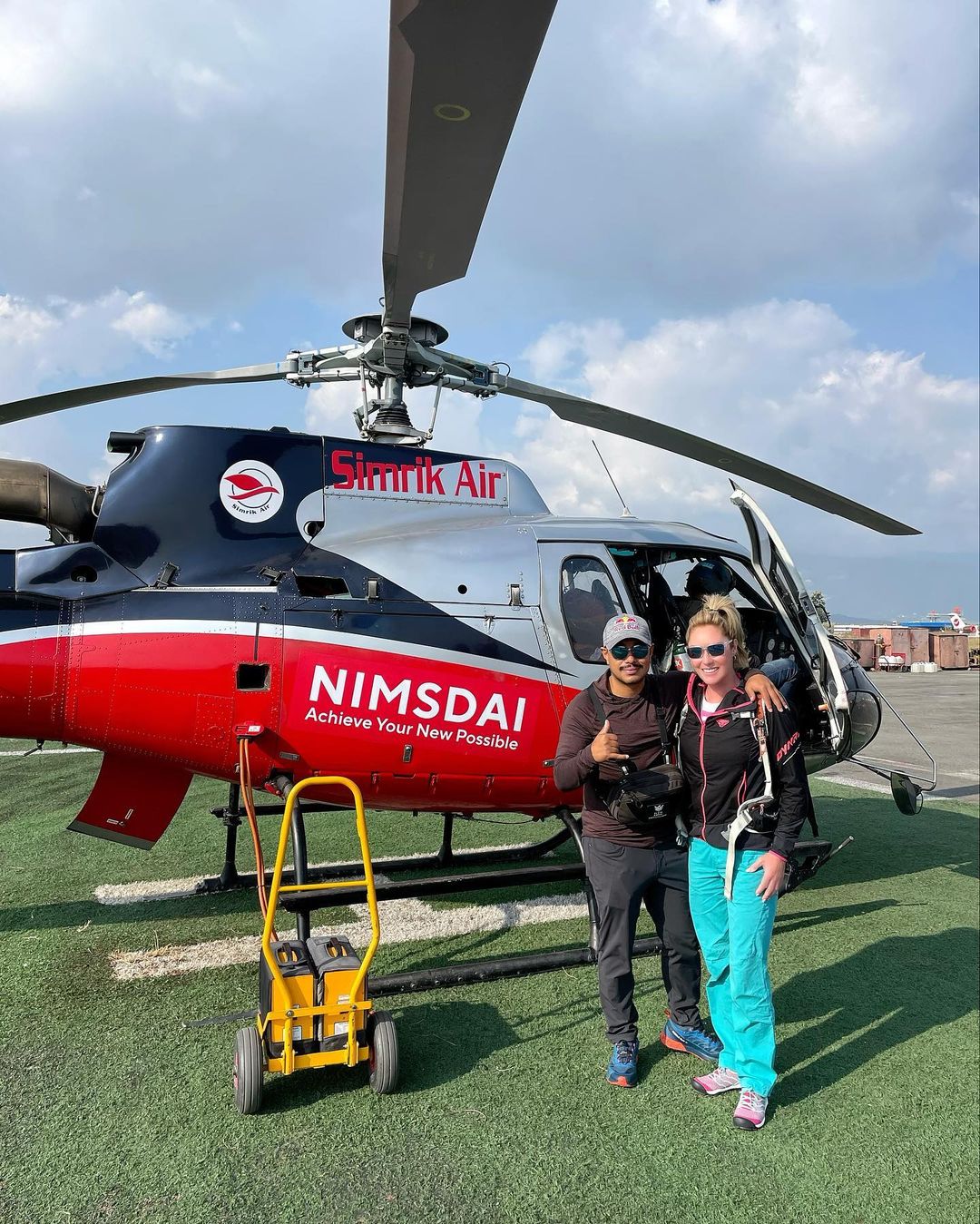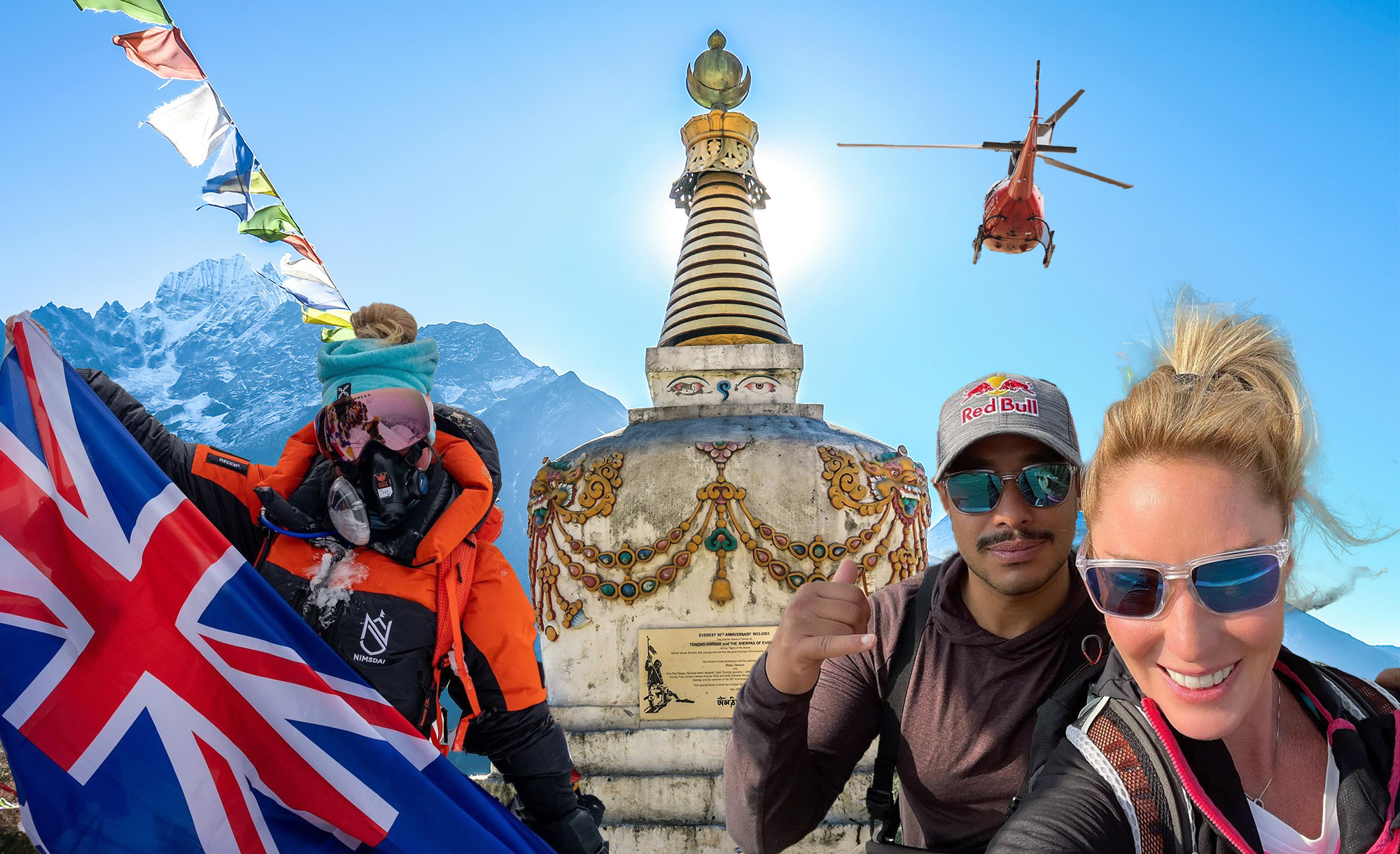The world’s tallest mountain, Mount Everest, holds a mystical place in the human psyche: staggering in its metrics, visually awe-inspiring, and a symbol of humanity’s ability to both conquer nature and tarnish it. 8,848 metres, to the very limit of survival.
The deep human fascination with Everest pushes hundreds of people a year to attempt the treacherous climb: no small undertaking in terms of physical exertion for the climber, or financial outlay, or time. One trekking company active on Everest ballparks a climb as costing at least US$50,000 – that’s just time on the mountain, not counting international travel costs or the extensive requisite training – with an expedition typically taking around 10 weeks.
There’s a lot that goes into an attempt at Everest: time spent trekking between camps, acclimating to higher altitudes, and waiting for a window in traffic and weather conditions for the final push to the summit. But despite growing concerns about humanity’s footprint on the mountain and the sustainability of attempts to climb it, the world’s tallest mountain is there – and it is, for a certain driven type of person, human nature to be drawn to it.
So where does cycling come into this? Answer: a curious news piece that emerged from Nepal in late June, alleging that Australian former pro cyclist Rochelle Gilmore took an illegal shortcut in her 2023 expedition, skipping to a higher camp with a helicopter before a summit push on the peaks of both Everest and nearby Lhotse.
Before her retirement, Rochelle Gilmore was a prolific winner on both the track and the road, a triple Commonwealth Games medallist across both disciplines and two-time scratch race World Championship silver medallist. But she’s perhaps best known for two things post-retirement. The first: as the founder and owner of Wiggle-Honda – one of the leading women’s pro cycling teams of its era (2013-2018). The second: she’s been behind the mic as a commentator for numerous races over the years since, including the Tour de France. If you're in Australia and watched any English-language cycling coverage from the last three editions of the Olympics, that was Gilmore you heard calling the action.


She was also, until recently, an extremely avid user of social media. Over the years, she has posted numerous updates on various subjects, and that means her mountaineering ambitions were no secret: in fact, for years they formed a key component of the public's understanding of Gilmore, across Instagram, Twitter, and blog posts. From 2019 to 2022, there was a steady flow of mountaineering content – training camps in Italy, expeditions to Everest Base Camp, self-shot videos of altitude-sickness in stairwells. Thousands of words were written about her goals and the struggles she encountered on the way.
Why, then, did the flood of climbing content stop, right at the point of what should have been celebration – an apparently successful 2023 summiting of the world’s tallest mountain?
In the couple of months since this story emerged – between a packed summer of racing – we’ve spent a bit of time trying to get to the bottom of this, firing off numerous emails, picking at loose threads, waiting for responses. Spoiler: there are more questions than answers, because most of the key players haven’t responded to repeated requests for comment and clarification.
Question marks in the silence
An article published June 22 by The Himalayan Times, an English-language Nepalese publication, may hold some clues to the silence.
The climbing company (Elite Exped) used by Gilmore for her summit push is led by renowned Nepalese mountaineer Nirmal (Nims) Purja – the Red Bull-sponsored star of the visually stunning Netflix documentary 14 Peaks: Nothing is Impossible, which chronicled his successful attempt to summit all 14 of the world's 8,000-metre peaks in what was, at the time, record speed. He was a big deal before, but his reputation has only grown since – he currently has over two million Instagram followers, and now has a record tally of 45 ascents of 8,000 metre-peaks under his belt.

In the wake of this international fame, however, a series of troubling stories emerged about this rock star of high-altitude alpinism. Most significantly, a New York Times exposé earlier this year alleged that Purja had sexually assaulted two female clients, taking advantage of the inherent power imbalance of being in charge of their survival in a dangerous environment (in an Instagram story at the time, Purja said that he “unequivocally denies any wrongdoing”). But there have been other allegations related to the way he conducts his expeditions; as one example, the Himalayan Times alleged that he’d illegally flown a helicopter from Base Camp to Camp II – a short-cut reducing the difficulty of the climb by skipping the treacherous Khumbu Icefall while also trimming time at altitude. The Nepalese aviation regulatory body, CAAN, has banned helicopter flights above Base Camp unless for emergency rescue.
That’s where Gilmore re-enters the picture: the passenger on some of those helicopter flights, according to The Himalayan Times, was a “top Aussie cyclist” who had benefitted from the shortcut for both an Everest climb and another 8,000-metre climb, Lhotse, in May 2023.

In the mountaineering community there is legitimacy to be found in the way the climb is tackled: factors like how closely it follows a given route – or establishes a new one; the role of support, such as whether a climber used supplemental oxygen or climbed with fixed ropes rather than on their own; and the seasonal conditions in which it is undertaken.
A climb of Everest is something like running a marathon – it begins at the starting line (Base Camp), and passes through a number of checkpoints (Camps II, III, IV) before reaching the ultimate goal. And like a marathon, you can’t stop halfway through, come back a week later to finish the job and claim to have completed it from where you left off.
The changing dynamics of mountaineering Everest have muddied the waters here, though. The number of people on the mountain has been growing: a viral picture from Nims Purja himself drew attention to the sheer number of people climbing Everest, a dotted string of Gore-Tex- and down-wrapped humanity inching to the top of the world in the high-altitude "death zone." Those climbers are frequently now supported by luxurious and obliging tour operators, helping make their dreams a reality.
On May 23, the day of Gilmore’s final push, she was one of 63 climbers to reach the summit – a figure that speaks to the commercialisation of Everest but doesn’t reveal the risks: taken as a whole, slightly over 7% of climbers fail to make it to the summit, and about 1% die.
These hazards are something Gilmore herself has experienced: in 2019, early in her climbing journey, Base Camp was itself the goal, one that she reached before needing to be carried down off the mountain due to a life-threatening mix of high altitude cerebral edema, high altitude pulmonary edema, and pneumonia, resulting in visits to three hospitals on the way back to Kathmandu.
But the mystique of the Himalayas drew Gilmore back: in 2022 she returned to Nepal, posting that her goal had changed – despite her previous negative experiences at altitude, she’d set her sights on Everest itself, and spent weeks training and summitting Ama Dablam (altitude: 6,812 m). “My reasons for wanting to stand on top of the world are changing daily,” she wrote in an Instagram post at the time. The open question, in light of that Himalayan Times story, is whether it matters how she got there.
For sources cited in that original article, there’s little ambiguity on that front. Those at the Civil Aviation Authority of Nepal (CAAN) told the paper that “Rochelle Gilmore, 42, was illegally taken to Camp II from the Base Camp on 21 May 2023 to resume her ascent to the world's highest peak," having been evacuated from Camp II earlier for medical reasons. The Department of Tourism confirmed Gilmore’s summits of Everest and Lhotse, and the Himalayan Database – the public record for those who summit and attempt to – records a Rochelle May Gilmore on both peaks (although her listed age is incorrect).
Base Camp sources of the Himalayan Times claimed that Gilmore took an “illegal heli-ride” on May 21, and was picked up from Camp II to return to Kathmandu after descending from Lhotse five days later. That ‘illegality’ is two-fold: for one, it indicates that the flight was operated without a permit, and for another it calls into question the legitimacy of Gilmore’s summit. “It's illegal to take climbers directly to Camp II for the summit bid," Rakesh Gurung, chief at the mountaineering section of the Department of Tourism, told the publication. "Summit is only counted if the climb begins and ends at the designated base camp of the mountain," Gurung said. [The Department of Tourism did not respond to repeated requests for comment from Escape Collective.]
Nonetheless, Nims Purja allegedly secured summit certificates with the help of an expedition liaison officer who wasn't actually there to verify it, and posted a congratulatory Instagram post: "I am so proud of Rochelle Gilmore and very happy for her– she has just summitted Everest and Lhotse with us @eliteexped," Purja wrote. "Never let anyone tell you your dreams cannot be done. There is always a way – with the proper preparation, mindset and team supporting you … With careful planning and consideration of all the health concerns, we were able to work together to create an all-round plan to support her to make her dreams possible. Firstly, she summited Ama Dablam with us last year and then, guess what? Rochelle smashed Everest and Lhotse.”
The Himalayan Times cites a figure charged by Purja’s company for this venture – 25 million Indian rupees (around US$300,000) “to make her mission a success."

One successful Everest mountaineer, when speaking to Escape Collective on background, expressed surprise at the circumstances of Gilmore’s climb. For one: using a helicopter for shortcuts up Everest is expensive (it’s also dangerous: in the thin air, the helicopter is flying perilously close to its ceiling). For another: it actually doesn’t make much sense, as the climb from Base Camp to Camp II is only a couple of days long, albeit including the Khumbu Icefall. Besides the expense it's also flirting with the law, as it's in violation of the country's aviation laws. And morally, it sits in an uncomfortable space, raising questions about the validity of any summit bids.
Because Gilmore declined to respond to repeated requests for comment, we can't be sure about the circumstances leading up to her summits of both Everest and Lhotse, and the alleged helicopter flights that aided them. We know only that she had troubling experiences on Everest previously: a 2019 Base Camp trip that left her teetering on the edge of survival (but from which she was inspired to achieve more), and a 2023 evacuation from Camp II a week before ultimately reaching the summit.
In stark contrast to Gilmore’s extensive self-coverage of her preparations and other ventures in the Himalayas, there's a conspicuous silence. The only public acknowledgement she has given of her trip to the roof of the world appears to be a single retweet of a Twitter post, a line in her website bio, and what seems in retrospect to be a carefully worded line in her Instagram bio: “Stood on Mount Everest."

Escape Collective reached out to Nims Purja’s company, which gave a brief response saying that “with our help and support [Gilmore] summitted Everest and Lhotse. We are proud of her achievements.” Escape Collective understands that Elite Exped disputes the accuracy of The Himalayan Times story, but the company would not confirm as much, despite multiple requests; nor did they provide information to verify the legitimacy of Gilmore's achievements when offered the chance to do so. Perhaps they are occupied fighting fires on other fronts: the Nepalese Tourism Department has recently advocated for an expedition ban for Purja and Elite Exped for "flout[ing] climbing rules", including "commandeering an unauthorized chopper flight to/from the Camp II."
Likewise, Gilmore did not respond to our requests for comment about the circumstances of her climb, including detailed questions about whether the legitimacy of doing the summit the ‘right’ way mattered, or whether it was enough, in her view, to stand on Mount Everest without climbing it in accordance with rules and laws, written and not.

All of which means that, for someone who has shared most of the harrowing details about her journey to Everest, we don’t actually know very much about Rochelle Gilmore’s time at its summit. We don’t know whether Nims Purja offered her a ride on a helicopter, or whether she requested it. We don’t know how long she stood there at the top of the world, or what it felt like, or whether there was any pang of regret about an apparent shortcut along the way. Legality aside, are the self-selected rules of mountaineering a code by which everyone is obliged to comply? Did the ethics and integrity of the trip to the summit factor into her decisions, or was this transactional – the exchange of money for an experience? And if that is the case, does any of it matter?
All we have is social media silence and a retweeted picture from a mountain that may not even be Everest: a face somewhere beneath goggles and an oxygen mask, its expression impossible to parse. Next to Gilmore, one of Purja’s employees holds one end of a small promotional banner, reading "above and beyond adventures." Somewhere down the mountain, dozens more people wait their turn for a few expensive, death-defying moments at the roof of the world.
Did we do a good job with this story?


